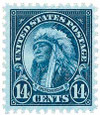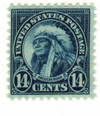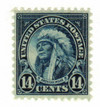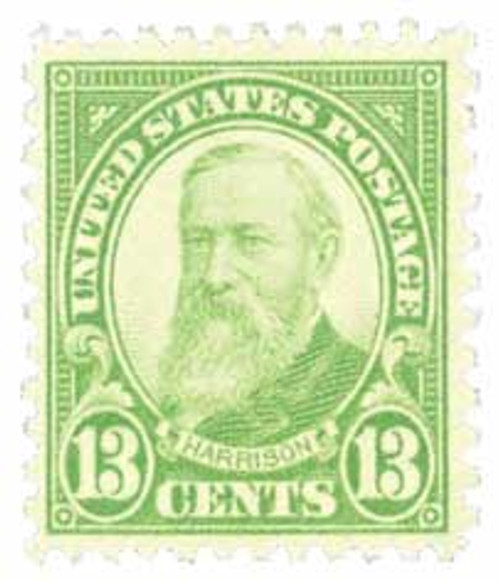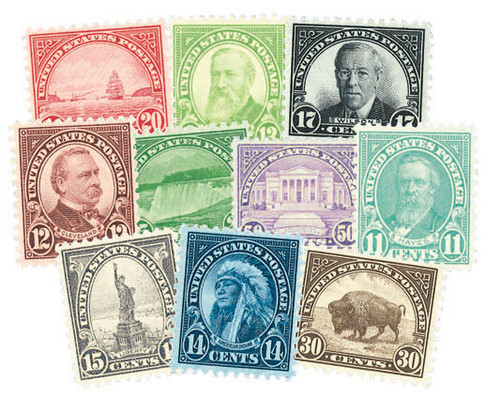
# 695 - 1931 14c American Indian, dark blue
The Most Perfect U.S. Stamps?
Death of Hollow Horn Bear
Hollow Horn Bear died on March 15, 1913. A Brulé Lakota chief, he fought during the Sioux Wars, including the Battle of Little Big Horn, and became a spokesman for his tribe. Hollow Horn Bear’s exact birthday is unknown, but is estimated to be in March 1850. He was born in present-day Sheridan County, Nebraska. As a child, he and his mother were captured during the Battle of Ash Hollow. He participated in his first fight at the age of 12 and continued to battle as his people were pushed west, confronting miners, settlers, the US Army, and the railroad. During his life, he joined in a total of 31 battles during the Sioux Wars to prevent white settlement on his homeland. In 1874, Hollow Horn Bear began working as a scout for the US Army. Then in 1876 while he was out searching for lost horses, he went to Sitting Bull’s camps and five days later, fought in the Battle of Little Bighorn. Hollow Horn Bear claimed to have personally fought Marcus Reno and George A. Custer during the battle. After the Lakota were forced to live in reservations, Hollow Horn Bear traveled to Washington, DC, to discuss living conditions in 1880. The following year, he was appointed head of the Rosebud Agency Indian Police in South Dakota. In that role, he arrested Crow Dog for the murder of Spotted Tail. The case went to the US Supreme Court and was the first time an Indian was tried for the murder of another Indian. The trial was a factor in the 1885 Major Crimes Act, which stated that certain crimes committed by Native Americans in Native American territory could fall under federal jurisdiction. After Hollow Horn Bear retired from the police force, he became a leading spokesman for the Lakota tribe. He favored individual ownership of land by his people because he felt it would be harder for the government to take it away. Between 1890 and 1910, Hollow Horn Bear participated in several negotiations for the Lakota Sioux, pressing for housing, schools, and more. He was also present at the inaugural parades of Theodore Roosevelt and Woodrow Wilson, the Louisiana Purchase Exposition, and the dedication of the National American Indian Memorial. While in Washington, DC, for the dedication of the National American Indian Memorial and President Wilson’s inauguration, Hollow Horn Bear caught pneumonia and died on March 15, 1913. A massive crowd turned out for his funeral, and his body received a military escort when it was returned to the Rosebud Reservation. In addition to appearing on two US stamps, Hollow Horn Bear was pictured on a 1970 Military Payment Certificate. It’s been suggested he may have been the inspiration for an 1899 $5 silver certificate and other currency as well. There’s also a historical marker honoring him on Route 18 in Todd County, South Dakota.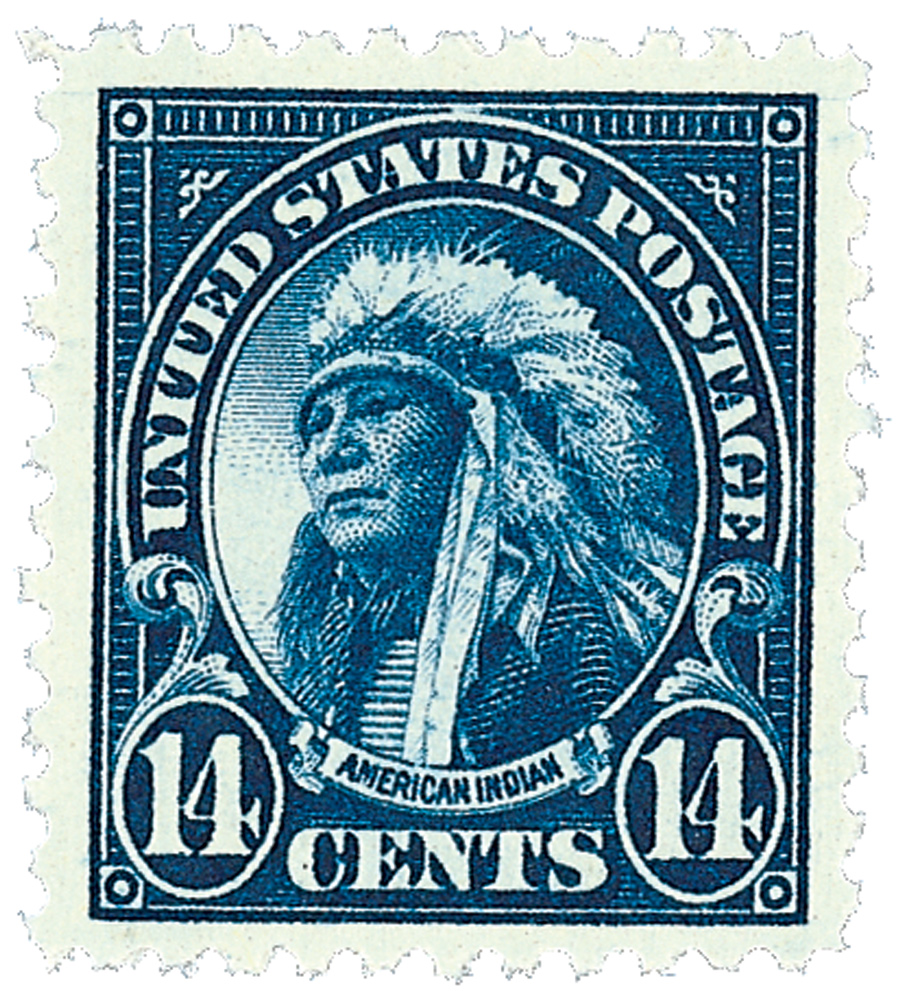
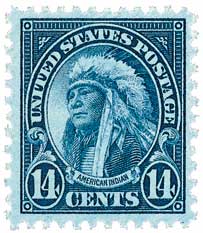
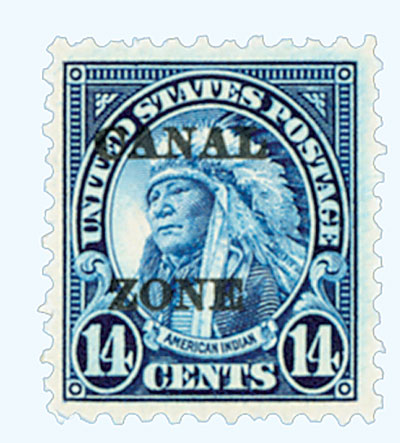
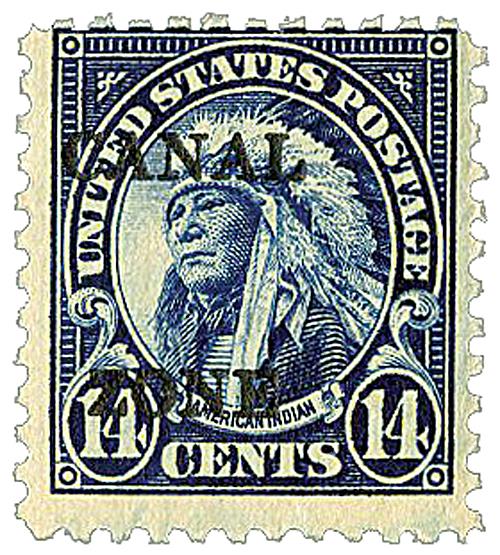
Issued as the U.S. spiraled into the Great Depression, the beautifully engraved Series of 1926-31 captures the spirit of America – the wisdom of our greatest leaders, the power of the majestic Niagara Falls, and the romance of the Wild West. This achievement is even more impressive when one considers the limitations the Bureau of Engraving and Printing worked with during the worldwide Depression.
“This series of definitive stamps represents, if not perfection, then at least a high degree of achievement by the Bureau of Engraving and Printing.”
– Noted philatelic author Gary GriffithThe Series of 1926-31 features the historic designs and patriotic symbolism of the Series of 1922. However, the new series was printed on a rotary intaglio press, saving time and money as it was printed in continuous rolls. The rolls were then threaded into a perforator, pulled through the machine under high tension, and perforated horizontally and vertically in a single step. A 10-gauge perforation had been the standard used to prevent the paper from tearing during production. To overcome complaints that stamps perforated 10 gauge were hard to separate, a quantity of the 2¢ stamps (U.S. #634, the first Series of 1926-31 denomination to be issued) were given experimental perforations of 11 x 101/2.
The experiment was a success – the stamps were sturdy enough to withstand the production process yet easy to separate for postal use. The Bureau of Engraving and Printing applied the compound perforations to the entire Series of 1926-31. In fact, the compound perforation stamps were so successful the format was used for the next 10 years, including the 1938 Presidential and 1954 Liberty Series.
The Most Perfect U.S. Stamps?
Death of Hollow Horn Bear
Hollow Horn Bear died on March 15, 1913. A Brulé Lakota chief, he fought during the Sioux Wars, including the Battle of Little Big Horn, and became a spokesman for his tribe. Hollow Horn Bear’s exact birthday is unknown, but is estimated to be in March 1850. He was born in present-day Sheridan County, Nebraska. As a child, he and his mother were captured during the Battle of Ash Hollow. He participated in his first fight at the age of 12 and continued to battle as his people were pushed west, confronting miners, settlers, the US Army, and the railroad. During his life, he joined in a total of 31 battles during the Sioux Wars to prevent white settlement on his homeland. In 1874, Hollow Horn Bear began working as a scout for the US Army. Then in 1876 while he was out searching for lost horses, he went to Sitting Bull’s camps and five days later, fought in the Battle of Little Bighorn. Hollow Horn Bear claimed to have personally fought Marcus Reno and George A. Custer during the battle. After the Lakota were forced to live in reservations, Hollow Horn Bear traveled to Washington, DC, to discuss living conditions in 1880. The following year, he was appointed head of the Rosebud Agency Indian Police in South Dakota. In that role, he arrested Crow Dog for the murder of Spotted Tail. The case went to the US Supreme Court and was the first time an Indian was tried for the murder of another Indian. The trial was a factor in the 1885 Major Crimes Act, which stated that certain crimes committed by Native Americans in Native American territory could fall under federal jurisdiction. After Hollow Horn Bear retired from the police force, he became a leading spokesman for the Lakota tribe. He favored individual ownership of land by his people because he felt it would be harder for the government to take it away. Between 1890 and 1910, Hollow Horn Bear participated in several negotiations for the Lakota Sioux, pressing for housing, schools, and more. He was also present at the inaugural parades of Theodore Roosevelt and Woodrow Wilson, the Louisiana Purchase Exposition, and the dedication of the National American Indian Memorial. While in Washington, DC, for the dedication of the National American Indian Memorial and President Wilson’s inauguration, Hollow Horn Bear caught pneumonia and died on March 15, 1913. A massive crowd turned out for his funeral, and his body received a military escort when it was returned to the Rosebud Reservation. In addition to appearing on two US stamps, Hollow Horn Bear was pictured on a 1970 Military Payment Certificate. It’s been suggested he may have been the inspiration for an 1899 $5 silver certificate and other currency as well. There’s also a historical marker honoring him on Route 18 in Todd County, South Dakota.



Issued as the U.S. spiraled into the Great Depression, the beautifully engraved Series of 1926-31 captures the spirit of America – the wisdom of our greatest leaders, the power of the majestic Niagara Falls, and the romance of the Wild West. This achievement is even more impressive when one considers the limitations the Bureau of Engraving and Printing worked with during the worldwide Depression.
“This series of definitive stamps represents, if not perfection, then at least a high degree of achievement by the Bureau of Engraving and Printing.”
– Noted philatelic author Gary GriffithThe Series of 1926-31 features the historic designs and patriotic symbolism of the Series of 1922. However, the new series was printed on a rotary intaglio press, saving time and money as it was printed in continuous rolls. The rolls were then threaded into a perforator, pulled through the machine under high tension, and perforated horizontally and vertically in a single step. A 10-gauge perforation had been the standard used to prevent the paper from tearing during production. To overcome complaints that stamps perforated 10 gauge were hard to separate, a quantity of the 2¢ stamps (U.S. #634, the first Series of 1926-31 denomination to be issued) were given experimental perforations of 11 x 101/2.
The experiment was a success – the stamps were sturdy enough to withstand the production process yet easy to separate for postal use. The Bureau of Engraving and Printing applied the compound perforations to the entire Series of 1926-31. In fact, the compound perforation stamps were so successful the format was used for the next 10 years, including the 1938 Presidential and 1954 Liberty Series.




